Card game
Poker Order: Rules and Guide
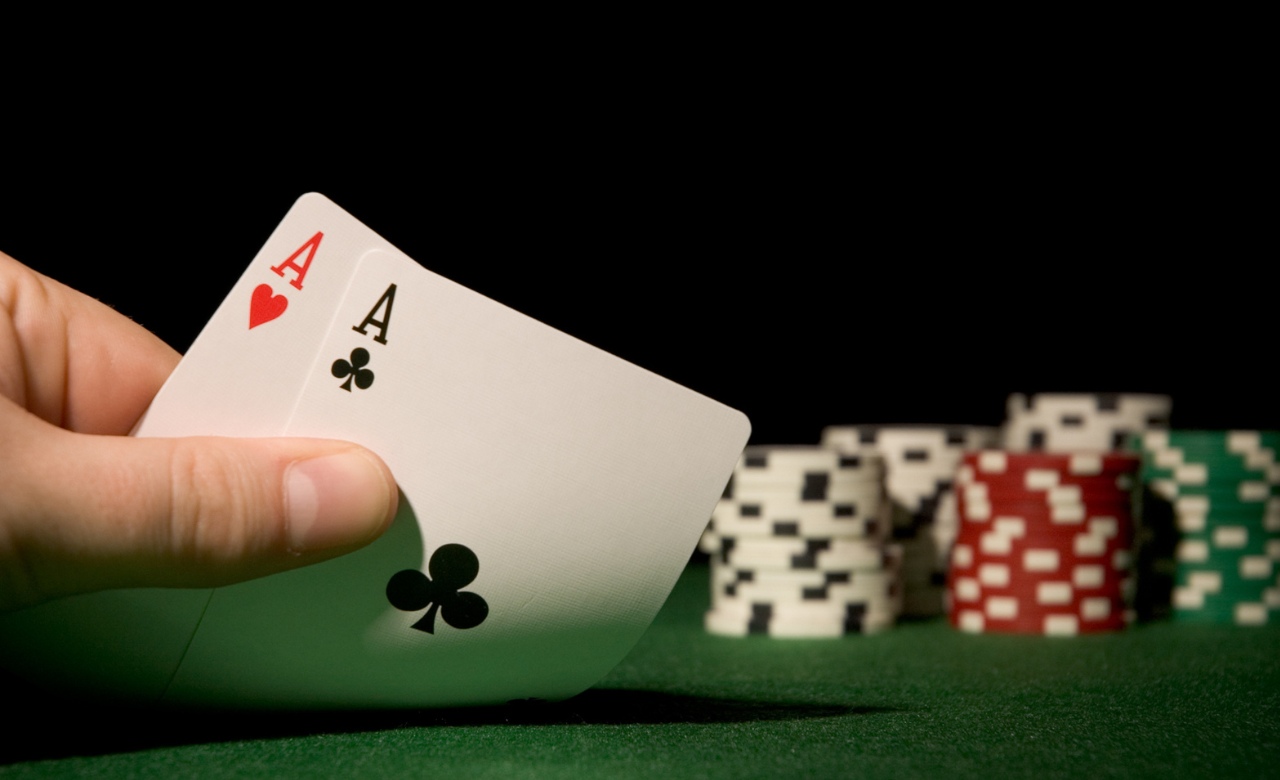
In this article, you will get an understanding of the poker system, including rules and a detailed guide to improving your game. We dive straight into the details of this popular and strategic card game.
Introduction to Poker Order
When it comes to playing poker, it is absolutely crucial to understand the order of play, from how the cards are dealt, to the moment in the game when the pot is awarded to a winner. Let’s start with the basics and then gradually delve into more advanced concepts and strategies.
Basic Rules of Poker Order
Poker order is the heart of the game and what all players should be familiar with before sitting down at the table. Here we will take a detailed look at the basic rules of poker order, from the first deal to the final round of play.
How to play
Poker order begins with the cards being dealt to all players. Each player receives two private cards at the beginning of the game. This is followed by a betting round where players can bet, raise or fold.
Card value and hierarchy
To win in poker, you must have the best hand at the end of the round, which is revealed when all the cards are laid out. Card value and hierarchy are crucial to understand, from the lowest card, the two, up to the highest card, the ace.
| Orders | regulators | Strategy |
|---|---|---|
| Poker Scheme | Each player is dealt two private cards, followed by betting rounds where you can bet, raise or fold. | Understanding card value and hierarchy is crucial. The player with the best hand at the end of the game wins. |
| Introduction | The understanding of the order of play is crucial, starting with how the cards are dealt, to the moment in the game when the pot is awarded to a winner. | Basic rules and strategies should be learned in order to improve your game and have more fun at the table. |
| Basic Rules | The game starts with each player receiving two private cards. | Nerve control and observant play are essential for making the right decisions during the game, as well as understanding competitors’ tactics and strategies. |
| Card value and hierarchy | The player with the best hand at the end of the game wins. | Understanding hand valuation and how to play each hand is crucial to becoming a successful poker player. |
Game variations of Poker Order

Poker Order is not just a game variant but a whole family of games, some more popular than others. Again, it’s important to realize the slight differences that vary between each type, but here we focus on two of the most famous variants: Texas Hold’em and Omaha.
Texas Hold’em
Texas Hold’em, often referred to as the King of Poker, is the most widespread variant of the Poker Order globally.
regulators
Texas Hold’em is relatively simple to understand, but complicated to master. Each player gets two hole cards and must use these plus the cards everyone puts on the table to create the best five-card hand.
Tips and Strategies
To be successful in this variant requires both skill and patience. Here I have listed the key points to consider:
- Patience: Do not play every hand. Good players recognize good hands, and play only the most profitable hands.
- Observation: The attention to the behaviors of the opponents can give an advantage to know what cards they may have.
- Pot odds: A way of determining whether a bet is worth the risk or not.
Omaha
Omaha is an equally exciting variant, very similar to Texas Hold’em with some key differences.
regulators
In Omaha, each player receives four hole cards and must use two of these along with three community cards to create the best five-card hand.
Tips and Strategies
Omaha is a complicated game that involves more combinations. Some strategic points to remember when playing Omaha include:
- Play strong hands: Omaha is often more action-packed and requires stronger hands to win.
- Position importance: Being the last to act gives the advantage of information. Request to see what the other players are doing before any decision.
- Litter percentage: an expression that describes how often you will improve your hand.
Seven Card Stud
Seven Card Stud is a classic poker game that has proven to stand the test of time. The game contains a unique element of strategy and skill, where the player needs to create the best five-card hand from the total of seven cards they are dealt.
regulators
The basic rules of Seven Card Stud are similar to many other poker games. Here are some of the most essential points:
- First step: Each player receives three cards, two face down and one face up.
- Betting rounds: Four betting rounds follow, with each player receiving an open card.
- Last card: A final card is dealt face down, followed by the final betting round.
Tips and Strategies
To succeed in Seven Card Stud, you need both strategic thinking and a good understanding of the game’s rules. Some useful tips include keeping track of all visible cards and not being afraid to fold bad hands early to minimize losses.
Key terms and concepts
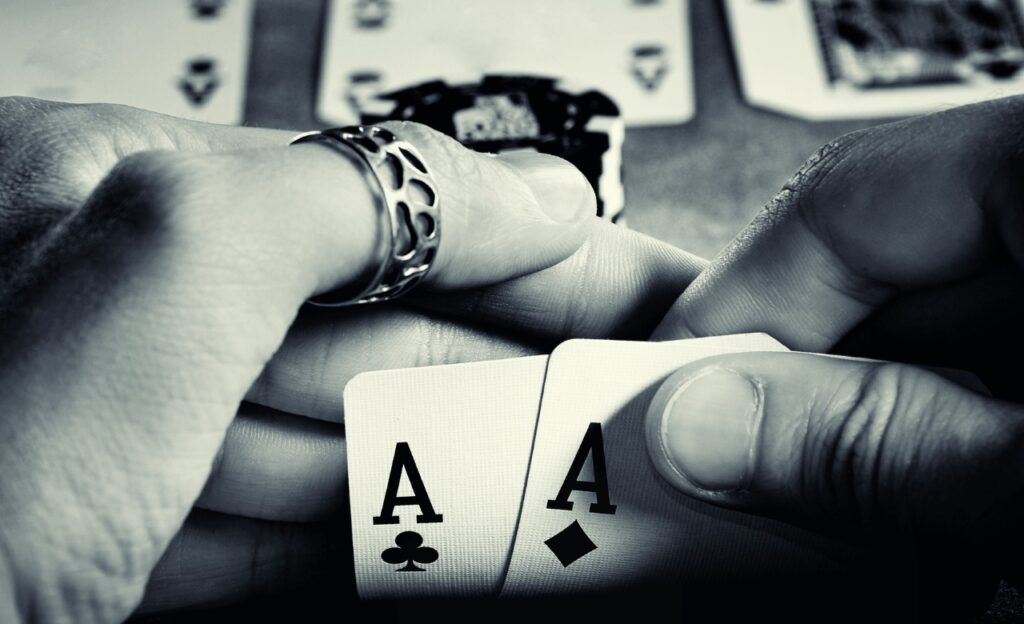
Understanding poker terminology is vital to success at the poker table. The right terms and concepts can be your biggest weapon when it comes to understanding your opponent and planning your next move.
Blinds
In poker, ‘blinds’ are mandatory bets that two players must make before the cards are dealt. There are two types of blinds: ‘small blind’ which is half the minimum bet and ‘big blind’ which is a full minimum bet. These create an initial pot and drive the excitement of the game.
Flop, turn and river
In poker terms, the terms used to describe the different stages of the game are flop, turn, and river. The flop, turn and river refer to the three cards laid out in the center of the table, after the initial betting rounds have been completed.
These cards are common to all players and are used to create the best possible five-card hand. It is during these steps that the player must make a decision on whether to continue to bet or fold, given their current hand and potential hands they can create using the community cards.
Check, Bet, Call, Raise and Fold
The concepts of check, bet, call, raise and fold are fundamental to understanding the poker order. Check means choosing not to bet, you add between rounds. You can also bet, or stake money, which other players must then match (call) or raise (raise) if they want to continue in the game.
Fold, on the other hand, means that you choose to give up your hand and all previous deposits to the pot. These terms are used in all forms of poker, and they serve to give the game its complexity and depth.
Showdown
At the end of the game there is a showdown where all remaining players reveal their cards. The player with the highest hand according to the poker system rules wins the pot.
If two players have equal hands, the pot will be split between them. The showdown is the crucial aspect of the game, where all planning and strategy is either rewarded or punished. Understanding the importance of showdown can help players streamline their strategies and make better decisions throughout the game.
Tips and Strategies for Poker Order

Positional play
Position in poker can be crucial. The late position gives you the chance to see what other players are doing before making your own move, which offers significant advantages. For example if no one raised before you, you can raise to steal the pot.
Reading opponents
Being able to read your opponents is a skillful aspect of the poker game that requires patience and experience to master. Search for visual or verbal signs to determine the strength of a player’s hand.
Common Mistakes to Avoid
Playing too hard with weak hands
No one likes folding, but sometimes it’s the best move. Being too aggressive with weak cards can lead to big losses.
Ignoring the opponent’s behavior
If you don’t pay attention to how your opponents are playing, you miss out on important information that can help you win.
Taking unnecessary risks
Be careful about taking risks, it’s not always that taking a chance is the best option. Poker requires tactics and strategy to maximize your chances of winning.
Get emotionally involved
One of the biggest pitfalls for poker players is getting too emotionally involved in the game. Try to keep your emotions in check and make rational decisions.
Card game
Skipbo – Game rules and guide

Welcome to a world of strategy and fun – Skipbo – a card game that brings generations together in a diverse mix of tactics and luck. Skipbo is a card game inspired by the classic game ‘Spite and Malice’. The game first became popular in the 1960s in the US and has since become a popular favorite all over the world.
What is Skipbo?
Skipbo is a strategy game that can be played by 2 to 6 players. The game consists of a shuffled deck with cards labeled from 1 to 12 and 16 “skipbo” cards that act as jokers. Learning the basics of the game is easy, but the challenge is in managing your deck and strategizing to be the first to get rid of all your cards.
Components of the game
The Skipbo game consists of 162 cards. 144 of these cards are numbered from 1 to 12 and the remaining 18 cards are the Skipbo cards which can be used as any number in the game. Each player also has their own ‘Player Pile’ of cards, and there are extra short piles called ‘Uncovered Piles’, ‘Draw Pile’ and ‘Build Pile’ on the table.
Objective of the game
The goal of the game is to get rid of all the cards in your ‘Player pile’. To do this, players build sequences of cards in numerical order in the center of the game board. The Skipbo cards act as wild cards and can be used to replace other cards in your sequences.
| Description | Components | Objectives |
|---|---|---|
| Skipbo is a popular card game | 162 cards marked from 1-12 and 18 skipbo cards | Be the first player to get rid of all the cards in your player pile |
| The game combines strategy and luck | Pile of players, Uncovered piles, Pile of rubble and Construction piles | Build sequences of cards in numerical order |
| Can be played by 2 to 6 players | Skipbo card can be used as any number | Skipbo cards are essential for developing your strategy |
| Collect rounds for profit | Each round is played until one player runs out of cards. | Play smart, fast and with a smile on your face |
Preparations

Before the world of Skipbo can begin, appropriate preparations must be made. These include setting up the game in an orderly fashion and clarifying the rules. In this way, all players will have a clear and fair gaming experience. But don’t worry, it may sound complicated, but it’s actually quite simple once you understand the basics!
Layout of the game
Skipbo’s layout is crucial. Make sure that all players have enough space for their place of play. Each game should have a draw pile, build pile and a hand of cards. The central playing area should be large enough for all players’ common piles.
The ranking of the cards
Your card rankings play a crucial role in the game’s progression. Here is a handy list of the cards’ ranking in Skipbo:
- Card 1: Lowest rank
- Cards 2-12: Numbered from lowest to highest
- Skipbo card: Can be used as any number, the highest ranked card
Rules of the game
A round of Skipbo starts with the person sitting to the left of the dealer. The game then continues clockwise. It is always important to keep an eye on who would be the next to draw hands on the cards, and that is the key to winning. Know your skipbo rules!
How to play Skipbo:

Come on, let’s dive straight into the fun! Playing Skipbo is certainly not a lengthy process, but it requires accuracy and strategy to master. It is in many ways like a skilled puzzle!
The course of the round
A round of Skipbo requires each player to take their turn and play cards from their hand, their building piles and the central pile. Each player’s goal is to eventually get rid of all their cards. It’s actually harder than you think, but also more exciting than you can imagine! Let’s dive deeper into how it works.
- Start with cards in hand: Each player starts the round with a hand full of cards.
- Playing cards: The player must then try to play these cards correctly.
- End of round: A player continues to play cards until they cannot or choose not to play any more cards.
Playing cards from the hand
It may sound simple to play cards from the hand, but this is where the brilliance of Skipbo really shines. The choices you make here can literally determine whether you will win or lose the game. Every decision counts, so it’s best to be on your toes!
Construction piles and central piles
In Skipbo, players work on both their own building piles and the shared central piles. These decks act as the heart of the game – this is where much of the action takes place!
- The building piles: Each player has up to four personal building piles they can build during the game.
- The central piles: There are also four central piles that all players can build on, but only in increasing order, from 1 to 12.
- Winner: The first player to get rid of all their cards in the draw pile wins.
I hope you now have a better idea of skipbo rules and that this serves as a good skipbo guide. I will continue to dig deeper into skipbo tips and skipbo strategy in future articles. Always remember, the strategy you choose can really change the course of the game, so always think two steps ahead!
How players interact
A characteristic of Skipbo is the cooperation of the players. The game is based on all players working together to create orderly card sequences. From the smallest denomination up to the highest, it is always a joint effort. But don’t let the joint effort fool you, there is a lot of strategy involved. Using your cards smartly to prevent your opponent from making their move can be the difference between winning or losing.
Summary
Skipbo is a game of teamwork and strategy. Each player must think two steps ahead, to stay ahead of their opponents. While cooperation is central to the game, it is important to remember that it is also a competition. Use your skipbo rules, skipbo tips, and skipbo strategy to gain the upper hand. And don’t forget to enjoy the game, because in the end it’s all about having fun!
Frequently asked questions – FAQ
Can you only draw one card at a time?
No, each player has the right to draw up to five cards from their own pile at the start of their turn, as long as they do not exceed the hand limit.
Why is it important to keep the cards in order?
The order of the cards is important as it helps players to create sequences. Without these sequences, it would be impossible to win the game.
How do you decide who starts the game?
Who starts the game is usually determined by drawing cards from the deck. The player with the highest card takes the first round of play. An alternative method could be that the youngest player starts.
Card game
Texas Holdem Poker: Rules and Guide

Welcome to the classic game of Texas Holdem Poker – an entertaining mix of strategy and luck! Are you new to poker or just want to brush up on your skills? You have come to the right place! We’ll cover everything you need to know to get started – the basic rules, the components of the game, hand rankings and much more.
Introduction to Texas Holdem Poker
Texas Holdem Poker, often called “The Cadillac of Poker”, is one of the most popular poker games around the world. Its popularity is due to its unique blend of strategy, skill and luck. The game is quite simple to understand, but can take a lifetime to master. Ready to dive in?
Basic rules for Texas Holdem Poker
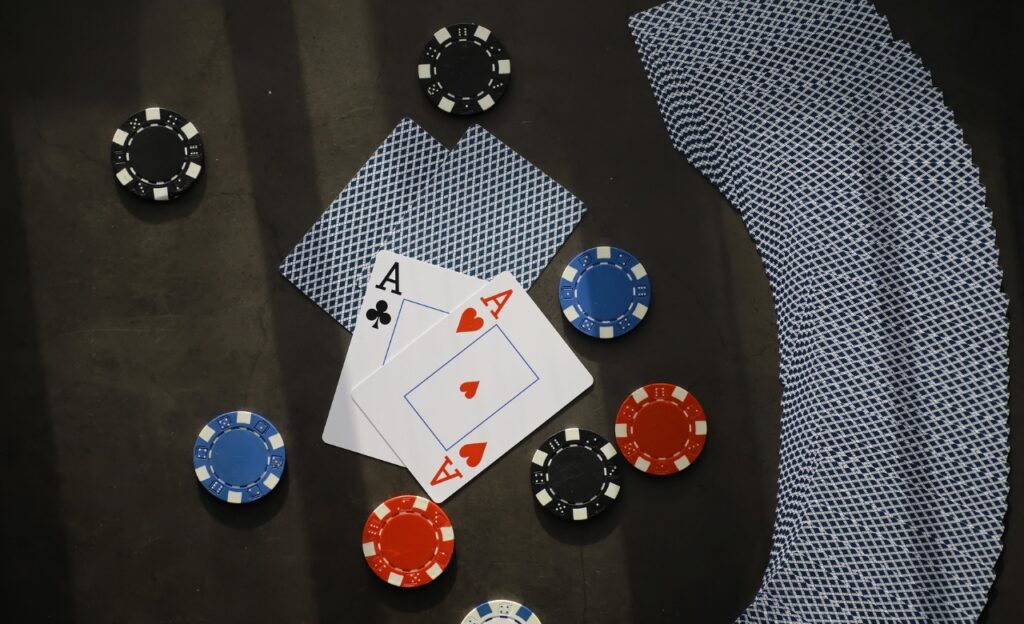
To play Texas Holdem, you need to understand some basic rules. Each player gets two private cards, also called ‘hole cards’, which belong to them and them only. Then five community cards are laid out on the “table”. Your goal? To make the best possible five-card hand from your two private cards and the five community cards.
Game components
To play Texas Holdem you need a poker table, chips, a 52-card deck and 2-10 players. Each player starts with the same amount of chips, and the aim of the game is to win all the opponents’ chips.
Sharing of cards
The game starts with two ‘blind’ bets being placed in the pot by the two players to the left of the ‘dealer’. Then two private cards are dealt to each player, starting with the player to the left of the big blind.
| Term | Description | Example |
|---|---|---|
| Blinds | Blind bets placed before the cards are dealt | Little blind, big blind |
| Private Cards | The two cards that only the player can see | King and Queen in hearts |
| Common Cards | The five cards on the table that all players can use to make the best possible hand. | 5, 6, 7, 8, 9 in clubs |
| Round of intervention | A period of the game where players can bet on their hand | Flopp, Turn, River |
Efforts
Betting in Texas Holdem poker can feel convoluted to the novice, but don’t worry, it’s not as complicated as it seems! There are two main types of actions: the mandatory actions, in the form of blanks, and voluntary actions, which are placed during the betting rounds. Each game starts with two players placing the mandatory bets. This is where the game really begins!
- Great Darkness: This bet is mandatory and is placed by the player to the left of the dealer.
- Little Dark: This bet, usually half the size of the Big Dark, is placed by the player to the left of the player who placed the Big Dark.
- Voluntary Bets: These bets are placed during the betting rounds, and can vary in size.
Betting rounds
The betting rounds in Texas Holdem poker are where most of the action takes place. There are four betting rounds in total, and each round gives players the chance to bet, check, call, raise or fold. These choices are crucial, as they affect both the size of the pot and which players remain in the game.
Display of cards and winning hand
After the final round of betting, the moment everyone has been waiting for – showing the cards! And this is where the winning hand is decided. In Texas Holdem poker, the best five-card hand wins. These five cards can be a combination of the player’s two face-down cards and the five community cards. In addition, if two or more players have the same winning hand, the pot is split equally between them.
Texas Holdem Poker Ranking of Hands

Understanding hand rankings in Texas Holdem poker is one of the pillars of becoming a successful player. Whether you play for fun or compete at a high level, knowing the hand rankings is extremely important!
Highest hand
In Texas Holdem poker, the highest hand you can have is a royal flush. It is a hand consisting of a ten, jack, queen, king and ace of the same suit. However, it is very rare to see such a hand in practice. Still, the feeling of landing one is indescribable!
Par
The essence of Texas Holdem Poker lies in understanding the hand rankings. To achieve a pair, it is enough to have two cards of the same rank in your hand. It is actually the most common type of hand that players receive in the game. To give you a clearer picture, let’s explore some examples:
- Case 1: You have two cards of the same rank (e.g. two aces) as your hole cards.
- Case 2: You have one card in your hand and the corresponding pair is among the community cards.
Pair of twins
When playing Texas Holdem Poker, two pairs actually trump one pair. This occurs when your best poker hand consists of two different pairs, along with a fifth unranked card. Getting two pairs requires a bit more skill and strategy. The more games you play, the better you become at identifying when you can get two pair and how to use this hand to your advantage.
Triss
Getting a three of a kind in Texas Holdem Poker means you have three cards of the same value, regardless of suit. This hand can come in handy, especially when playing against multiple opponents. There are several ways to achieve a triss, and the more you play, the more intuitive these patterns will become for you.
Bridges
Another popular hand to aim for is ‘The Ladder’. This means that you have five cards in numerical order, regardless of color. The uniqueness of creating a ladder is that the ability to think ahead comes in handy here. Being able to predict which cards will be drawn next can give you a huge advantage and increase the chances of creating the most impressive ladder!
Color
One of the strongest hands in Texas Holdem poker is called Suit, and it occurs when all five cards in your hand are of the same suit, either hearts, spades, clubs or diamonds. The detail here is that the order of the cards does not matter; all that is needed to get a Color is that they are all the same color. A tip to remember is that if two players both have a color, the player with the highest ranked card wins the hand.
Barracks
Speaking of strong poker hands, Kåk is also high on the list of strong hands in Texas Holdem poker. A Kåk consists of a pair and a trick, which means you have two cards of the same rank and another three cards of another same rank. If two players both have a Kåk, the trick is looked at first; the player with the higher ranked trick wins the hand. If the threes are equal, it is decided by seeing which pair is the highest.
Summary
Texas Holdem poker may seem complicated to the uninitiated, but the fact is that once you learn the basics and all the different hands, it quickly becomes a game that is as fun as it is strategic. Those basics include understanding the order of the hands, knowing when to bet, and having a basic strategy to optimize your chances of winning.
Frequently asked questions – FAQ
What is “Color” in Texas Holdem Poker?
Suit is when all five cards in your hand are of the same suit, either hearts, spades, clubs or diamonds.
What does it mean to have a ‘shack’?
A Kåk in Texas Holdem poker means that you have a pair and a three of a kind, i.e.. two cards of the same value and another three cards of another same value.
How can I get better at Texas Holdem Poker?
Becoming proficient in Texas Holdem poker requires patience and practice. A good way to start is to understand all the rules and the different poker hands. After that, you can start analyzing and understanding different strategies to improve your chances of winning.
Card game
Uno Games: Rules and Guide

Welcome to our in-depth guide to the popular card game Uno. Here we dive straight into the game’s basic rules, offer strategy tips, and provide an at-a-glance guide for anyone who wants to learn more about this classic card game.
What is Uno Games?
Uno is one of the world’s most beloved family games. In this card game, designed in 1971, players aim to get rid of all their cards to squeeze out a winning “Uno!”. and then win the game. The game involves strategy, luck, and the ability to read your opponents’ behavior.
Uno Games: card overview

In the Uno game, a special card deck is used that consists of 108 cards, divided into four different colors (red, yellow, blue, green), with numbered and special cards in each of these colors. Each card has a unique power that can change the outcome of the game in the blink of an eye.
Game materials
The Uno deck contains 108 cards. There are four colors and each color contains numbered cards from 0-9, as well as special cards like ‘Skip’, ‘Reverse’, ‘Draw Two’, ‘Wild’ and ‘Wild Draw Four’. This approach offered a profound strategic dimension to the game.
Reshuffling and distribution of cards
Before the game begins, the Uno cards are shuffled well and each player receives seven cards. The rest of the cards are placed face down in a discard pile in the center of the playing area, and the top card is turned over to form the discard pile.
| Card | Color | Effect |
|---|---|---|
| 0-9 | Red, Yellow, Green, Blue | No particular effect |
| Skip | Red, Yellow, Green, Blue | Next player misses his turn |
| Reverse | Red, Yellow, Green, Blue | Change the order of play |
| Draw Two | Red, Yellow, Green, Blue | The next player must draw two cards |
| Game | – | Choose any color |
| Wild Draw Four | – | Choose a color and the next player must draw four cards |
Uno Games: Goals
The primary goal of the Uno game is to be the first player to get rid of all their cards. But it is not as easy as it sounds! You need to use tactics, strategy and a bit of luck to succeed. Consider the following key points:
- Remove cards: You should remove a card from your hand at each turn, if possible.
- Matching cards: You must match the top card of the junk pile, either by color, number or symbol.
- Say ‘Uno’: You should say ‘Uno’ when you have only one card left in your hand.
Rules of the game
The game starts with the dealer dealing seven cards to each player. Then the dealer turns over the top card of the deck and places it on the table to start the junk pile. The game proceeds clockwise from the dealer, but the direction may change during the game.
Card management and succession of games
In each turn, the player should match the top card of the junk pile, either by color, number or symbol. If the player cannot lay a card, he or she must draw a card from the draw pile. If the drawn card can be placed, the player may do so immediately. The game continues until a player has placed their last card.
Playing cards based on rules and supplements
The winner of each round scores points based on the cards the other players have left in their hands. Winning is determined by first reaching a predetermined point limit, usually 500. But if you want to spice up the game a bit, there are several fun additional rules you can introduce! These include:
- Stacking: Allows players to stack multiple Draw 2 or Wild Draw 4 cards on top of each other.
- Jump-in: If a player has exactly the same card (same color and number) as the card just laid, they can play that card out of turn.
- Seven-O: When a 7 or a 0 is played, there is a rotation of cards in the hand.
Uno Games: Preparations
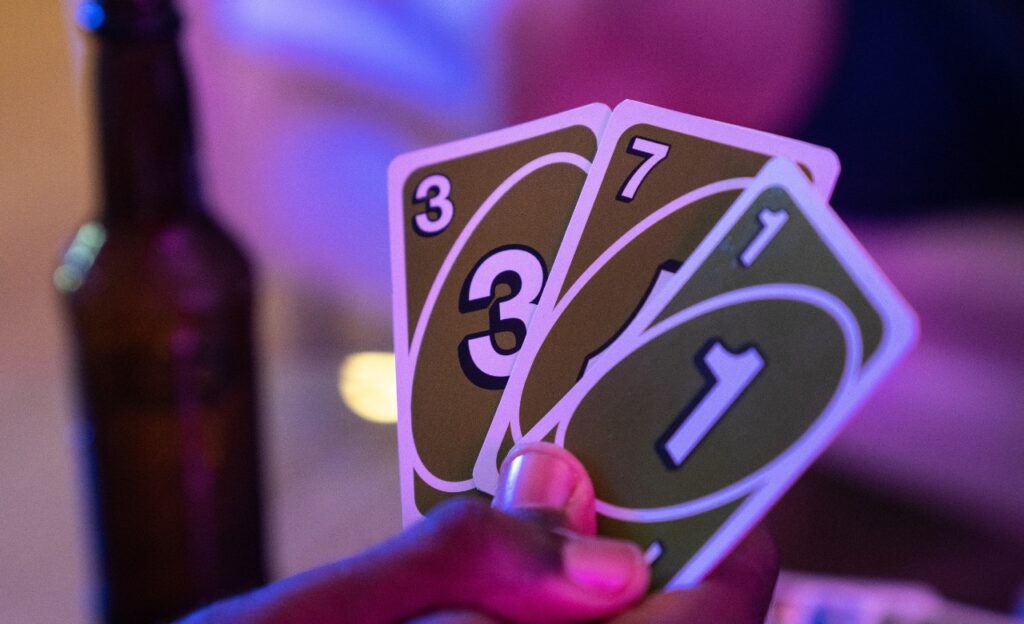
Before you start your exciting game of Uno, you need to make some preparations. Start by shuffling, dealing the cards and choosing the starting cards. Uno is not only a game of luck, it is also about strategy and smart thinking. Be sure to prepare everything properly to be able to focus fully on the game.
Start card
The first step in the Uno game process is to distribute the starting cards. Each player should receive seven cards each. The cards should be shuffled so that no one knows what he or she will get. This introduces an element of surprise and excitement into the game.
- Number of players: 2 to 10 players can participate in Uno.
- Card distribution: Each player receives 7 cards at the start.
- Coverage of cards: No other player should be able to see your cards.
Setting up and using special cards
The Uno game contains various special cards that can affect the turn of the game or the actions of other players. These cards can be used strategically to win the game. Almost all players see these cards as their secret weapons! Special cards can block other players, force them to draw cards or change the order of play.
Changing colors and numbers
A big part of the strategy behind Uno is the ability to change the color and number of the game. With the right timing, these powerful moves can transform the direction of the game and help you win! Whether you switch to a color that favors you or change the numbers to set up your opponents, a well-planned switch can make a big difference. It is important to remember that the basic game of Uno is driven by turns, planning and a bit of luck!
Uno Games: Exit the game
When playing Uno, it is important that you know when and how to end the game. After a player has placed their last card, i.e. when a player runs out of cards, the game is over. If the game ends before any player has any cards left, the player with the lowest score wins.
Uno Games: Scoring
The points in the Uno game are easily counted. Each number card is worth its number, for example, a card numbered 5 is worth 5 points. Action cards like Draw Two, Skip and Reverse are worth 20 points each? While Wild and Wild Draw Four cards are worth the most with 50 points each.
Uno Games: Tips and Strategy

The best tips and strategies for winning the Uno game include keeping track of your opponents’ cards and always using your special cards at the right time. Here are some key points to consider:
- Keep track of your opponent‘s cards: Always keep an eye on what color and numbers your opponents are playing with the most.
- Using your special cards smartly: Using your special cards at the right time can really turn the game in your favor.
- Hold back your Wild cards: It’s often best to hold back your Wild cards for as long as possible so that you can use them in crucial situations later in the game.
Summary
Uno is a very fun and engaging game that can be enjoyed by people of all ages. It is played with a special set of cards and involves a lot of strategy and planning. We hope that this guide has given you a deeper understanding of the Uno Game: its rules, scoring and strategies.
Frequently asked questions – FAQ
What does it mean to shout ‘Uno’?
When a player has only one card left to play in their hand, that player must call “Uno”. If the player forgets to call Uno and another player points this out before the next player’s turn starts, that player must draw two additional cards from the deck.
How many points is each Uno card worth?
Number cards are worth their printed value, action cards are worth 20 points and Wild cards are worth 50 points.
What happens if a player cannot play a card?
If a player does not have a valid card to play, the player must draw a card from the draw pile. If the drawn card can be played, the player may do so.
-

 Card game1 year ago
Card game1 year agoSkipbo – Game rules and guide
-

 Rules of the game1 year ago
Rules of the game1 year agoYatzy: Rules and Guide
-
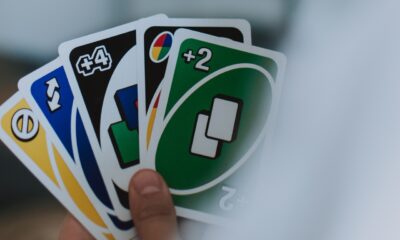
 Card game1 year ago
Card game1 year agoUno Games: Rules and Guide
-

 Card game1 year ago
Card game1 year agoRummy: Rules and Guide
-

 Rules of the game1 year ago
Rules of the game1 year agoMonopoly: Rules and Guide
-

 Blog7 months ago
Blog7 months ago4 Up 4 Down Card Game Rules: Your Ultimate Guide to Mastering the Game
-

 Blog7 months ago
Blog7 months agoHow Deep Will You Go Card Game: A Complete Guide to Rules and How to Play
-

 Rules of the game1 year ago
Rules of the game1 year agoYatzy Bonus: Rules and Guide










